MR. JIMMY
ミスタージミー
PRODUCED, DIRECTED, & EDITED BY PETER MICHAEL DOWD
製作・監督・編集 ピーター・マイケル・ダウド
CINEMATOGRAPHY BY MATTHEW BLUTE & IVAN KOVAC
撮影監督 マシュー・ブルート&アイヴァン・コヴァック
SOUND RECORDING & MIXING BY JEFFREY JOUSAN
録音&音響効果 ジェフリー・ジョーサン
PRODUCED, DIRECTED, & EDITED BY PETER MICHAEL DOWD
製作・監督・編集 ピーター・マイケル・ダウド
CINEMATOGRAPHY BY MATTHEW BLUTE & IVAN KOVAC
撮影監督 マシュー・ブルート&アイヴァン・コヴァック
SOUND RECORDING & MIXING BY JEFFREY JOUSAN
録音&音響効果 ジェフリー・ジョーサン
In snowbound Tokamachi, Japan, teenaged Akio Sakurai took refuge in his room, escaping to another world with a pair of headphones and a pile of Led Zeppelin records.
Moving to Tokyo, Akio worked as a “salary man” by day, but by night became "Mr. Jimmy," adopting the guitar chops and persona of Jimmy Page.
For 35 years, Akio recreated vintage Zeppelin concerts note-for-note in small Tokyo clubs, until the “real” Jimmy Page stopped by one night, and Akio’s life changed forever.
Inspired by Mr. Page’s ovation, Akio quits his job, leaving behind his family to move to Los Angeles and join “Led Zepagain.” Soon cultures clash, and Akio’s idyllic vision of America meets with reality.
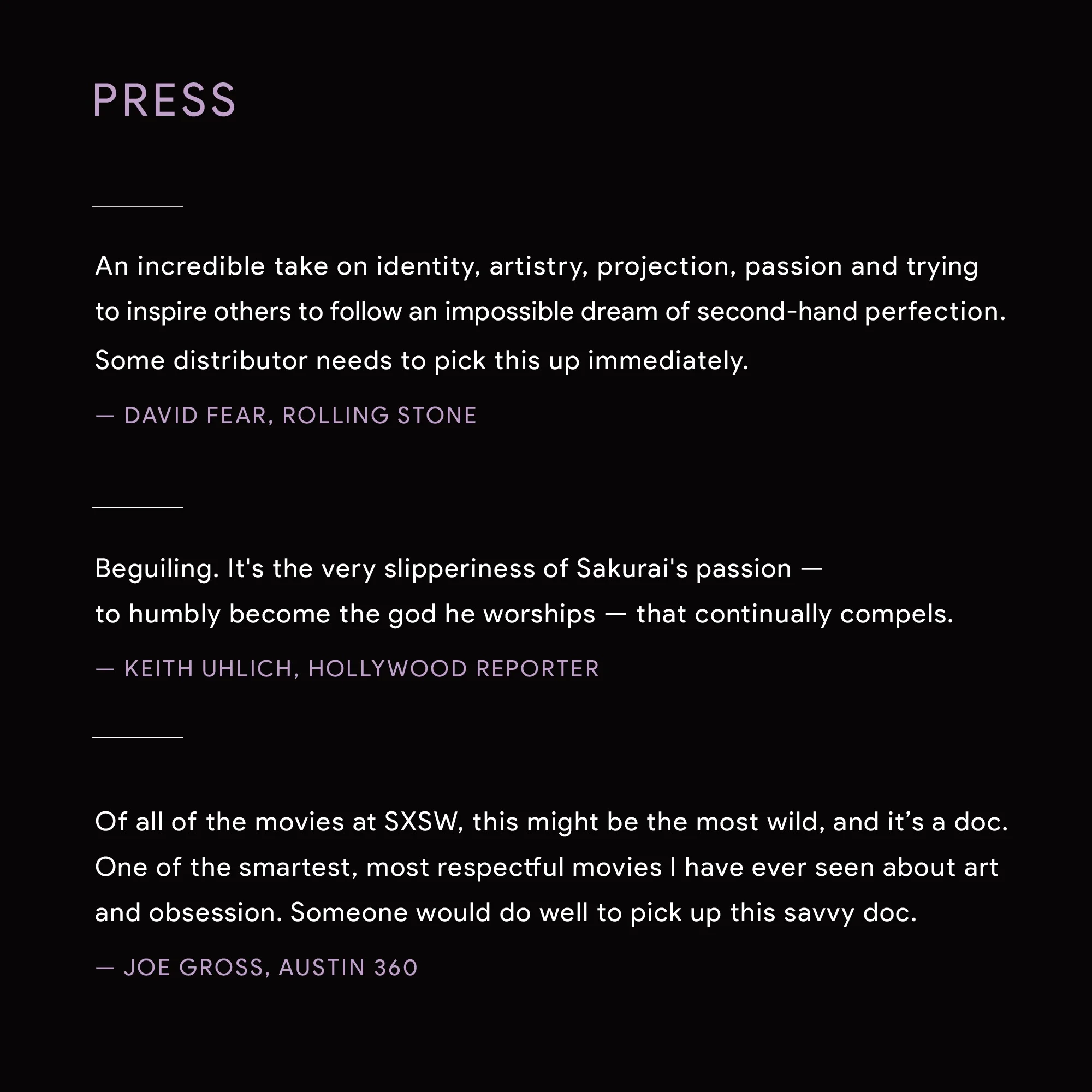
Rolling Stone: “SXSW 2019: Lil Peep, Johnny Cash and The Man Who Would Be Jimmy Page”
Rolling Stone: “25 Movies We Can’t Wait to See at SXSW”
The Hollywood Reporter: “Mr. Jimmy: Film Review SXSW 2019”
Austin 360: “40 Films We’ve Gotta See at SXSW 2019”
Austin 360: “12 Movies People Are Talking About at SXSW Film”
Variety: “Led Zeppelin Superfan and Documentary Subject Picks Jimmy Page’s Best Live Licks”

Peter Michael Dowd’s short documentary The King of Size has screened at festivals including the Austin Film Festival, the New Orleans Film Festival, and the Little Rock Film Festival, where it won the World Shorts competition.
Previously, Dowd was the Curator of Film at the Museum of the Moving Image and Film Programmer at George Eastman House. He has organized film exhibitions and retrospectives for festivals including the Vienna International Film Festival and Mexico City International Contemporary Film Festival.
He has written about film for publications including the New York Sun, Spirit & Flesh, and Moving Image Quarterly.
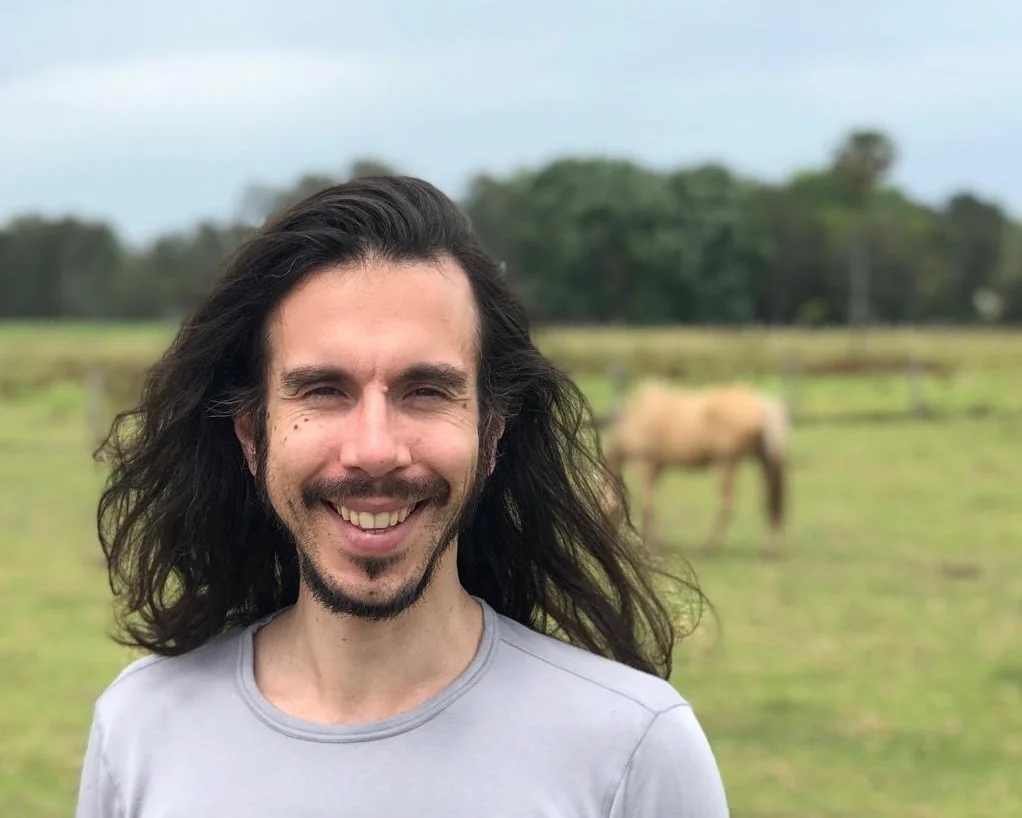
Ivan is an Australian trained, but Japanese industry-raised DP. Ivan began his career in Australia as a gaffer. On moving to Japan he first started working as a documentarian, then moved onwards towards music videos, feature film and CM work. He has a keen eye to fuse the best elements of both Western and Japanese aesthetics, and the fusion thereof, to create a visually unique image expressive in his colour, contrast, and pattern. A documentary Film, “Alone in the Zone,” was honoured with The Webby Award in 2014 in addition to numerous other awards for his commercial and feature work.
Matthew is a Los Angeles based cinematographer with a body of work that includes dramatic television, documentaries, commercials, and features. His recent credits include Director of Photography on Korean megastar Kim Jang Hoon’s 3D music video, DP for 3 seasons of CNN’s documentary series Declassified, and Stereographer for the last two installations of the Transformers franchise directed by Michael Bay.


Born in New Jersey but living in Japan for 28 years, Jeffrey Jousan is a audiophile recordist/engineer, producer, cross-cultural communicator and documentary filmmaker. Passionate about high quality sound wherever he goes; in the studio, at live venues or on location, he uses the power of sound move and inspire. His films have been aired on NHK World and his short film, “Do Digital Dogs Dream of Dying” is on permanent display at the The Heinz Nixdorf MuseumsForum in Germany. He is also the founder/director of the Ishinomaki Documentary Film Course and the Ishinomaki International Film Festival. Jeffrey has also presented at TEDx Kyoto and TEDx WasedaU to talk about his experiences making documentary films in the Tsunami disaster area in north eastern Japan.
Gabe Stewart is a location sound mixer based in Los Angeles. In 2018 he worked primarily on documentaries including Jawline, a 2019 Sundance selection. He also works for Top Rank covering boxing on ESPN. Gabe attended Oberlin Conservatory of music where he got his start booking bands and recording live musicians. He played guitar in high school and wishes he could still shred.

Gabe Stewart, on the set of Lost at universal studios.

Jesse Brunt has been shooting aerial cinematography for a decade. Shooting for film and television at all altitudes, he lives to capture beautiful images from above. His razor sharp eye and passion for getting the perfect shot was an essential component to director Peter Michael Dowd achieving his vision.
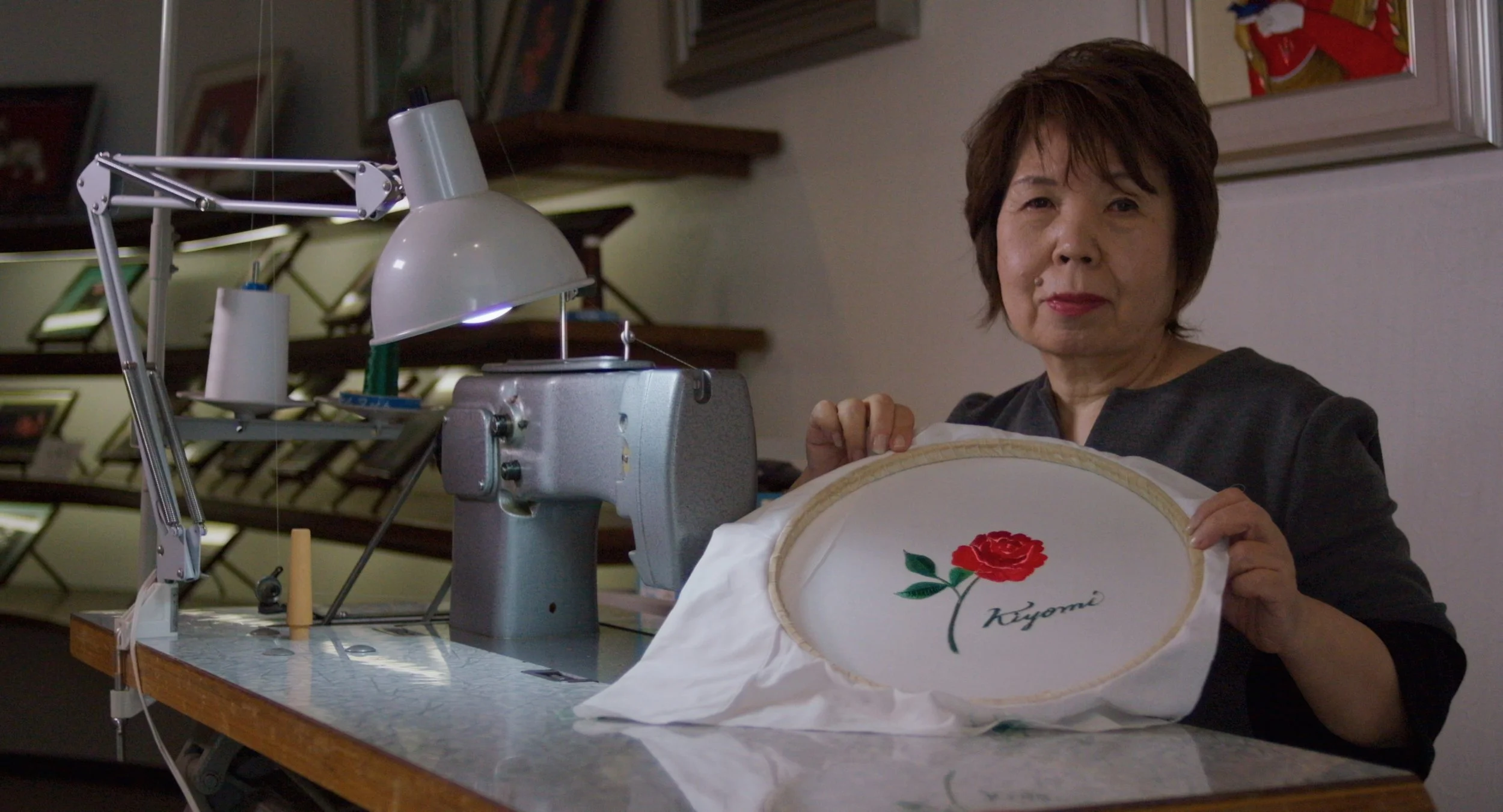
The designer of Akio’s meticulous re-creation of Mr. Page’s “Black Dragon” suit, Ms. Osawa was born in Kiryu, Gunma, a Japanese city known for fabrics. She originally wanted to be a painter until she discovered “Yokoburi embroidery.” A needle and thread became her brush and paints, and she immersed herself in her new medium for the next sixty years. Her master craftsmanship is appreciated throughout Japan and in high fashion circles. Throughout the 80s and 90s, she worked Paris Fashion Week for designers including Yoshiyuki Konishi and Kansai Yamamoto. In 1993, she was invited to exhibit in Paris. In 1996, she was the first embroidery artist to be awarded the prized “Yellow Ribbon Medal” from the emperor of Japan.
The designer of Akio’s re-creations of Mr. Page’s “White Dragon” and “Bolero” costumes, Ms. Nakahara is a Tokyo based costume designer who began as a dancer herself before transitioning to design. Rie’s work stands out because of her attention to how the garment will move on stage, no doubt benefiting from her dancing days. She is Akio’s costume designer for all Mr. Jimmy shows as well as his touring wardrobe with “Jason Bonham’s Led Zeppelin Evening.”


Since 2001, Mr. Suzuki has meticulously worked on all elements of Akio Sakurai’s amplifiers -- down to the soldering -- to ensure their sonic fidelity to Mr. Page’s singular tone(s). Born in 1939, he is a pioneer of Japanese guitar amplifier development, having worked at Guyatone, before establishing TADD Sound Engineering in 1975. First he produced original amplifiers, then later started restoring and remodeling vintage vacuum tube amplifiers for a few lucky customers such as Mr. Jimmy.
In 1999 Mr. Washida founded “Guitar Traders,” one of the leading vintage guitar shops in Japan. Soon after its founding, he started DMC with Mr. Iwasaki, dedicated to recreating vintage parts, and going to extraordinary lengths to do so. To be clear, DMC doesn’t merely make parts that “look” like the original, they fabricate parts from scratch using the original methods, components, and alloys. It’s a remarkable level of fidelity that seems perfectly matched to Akio Sakurai’s mission.
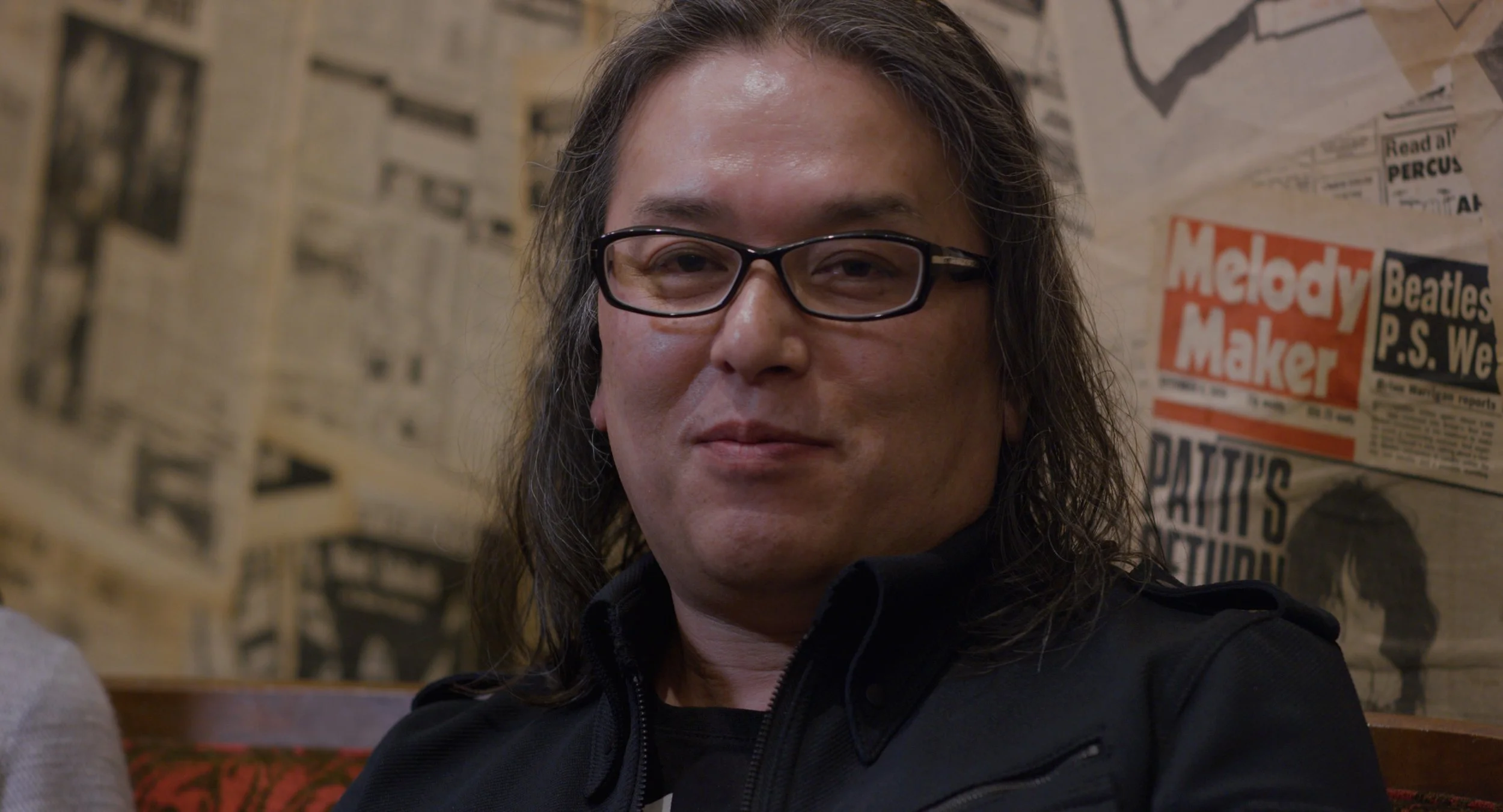

Graduating art university in Tokyo, she joined a music instrument company rather than becoming an art teacher because of her insatiable passion for music and then met “Jimmy” Sakurai. Her support for Mr. Jimmy with management skills, accounting, art direction, and even organizing and cooking for gatherings of fellow Zeppelin and music aficionados has continued over their 25 year marriage. Ms. Sakurai is also the director of two non-profit organizations that introduce art to children with developmental disabilities.
Mr. Iwasaki is one of the founders of DMC, which restores Les Paul guitar parts with a remarkable level of meticulousness. DMC parts are used by Mr. Jimmy on all his guitars, even his original 1959 Les Paul sunburst. As he says in the film, DMC and Mr. Jimmy’s dream is the “re-birth of the original.”


For 30 years Mr. Kishimoto has worked with vintage guitars, and has repaired and hand wound thousands of pickups. Since he founded Grinning Dog in 2002, he has made custom pickups with strictly vintage components, as they were hand wound in the 1950s and 60s. With his careful hand craftsmanship and discriminating ear, Mr. Kishimoto is the only pickup builder that Akio trusts with the sacred tone of Mr. Page. Together they have hand wound over 15 generations of pickups, each generation an attempt to get closer to that inimitable sound.
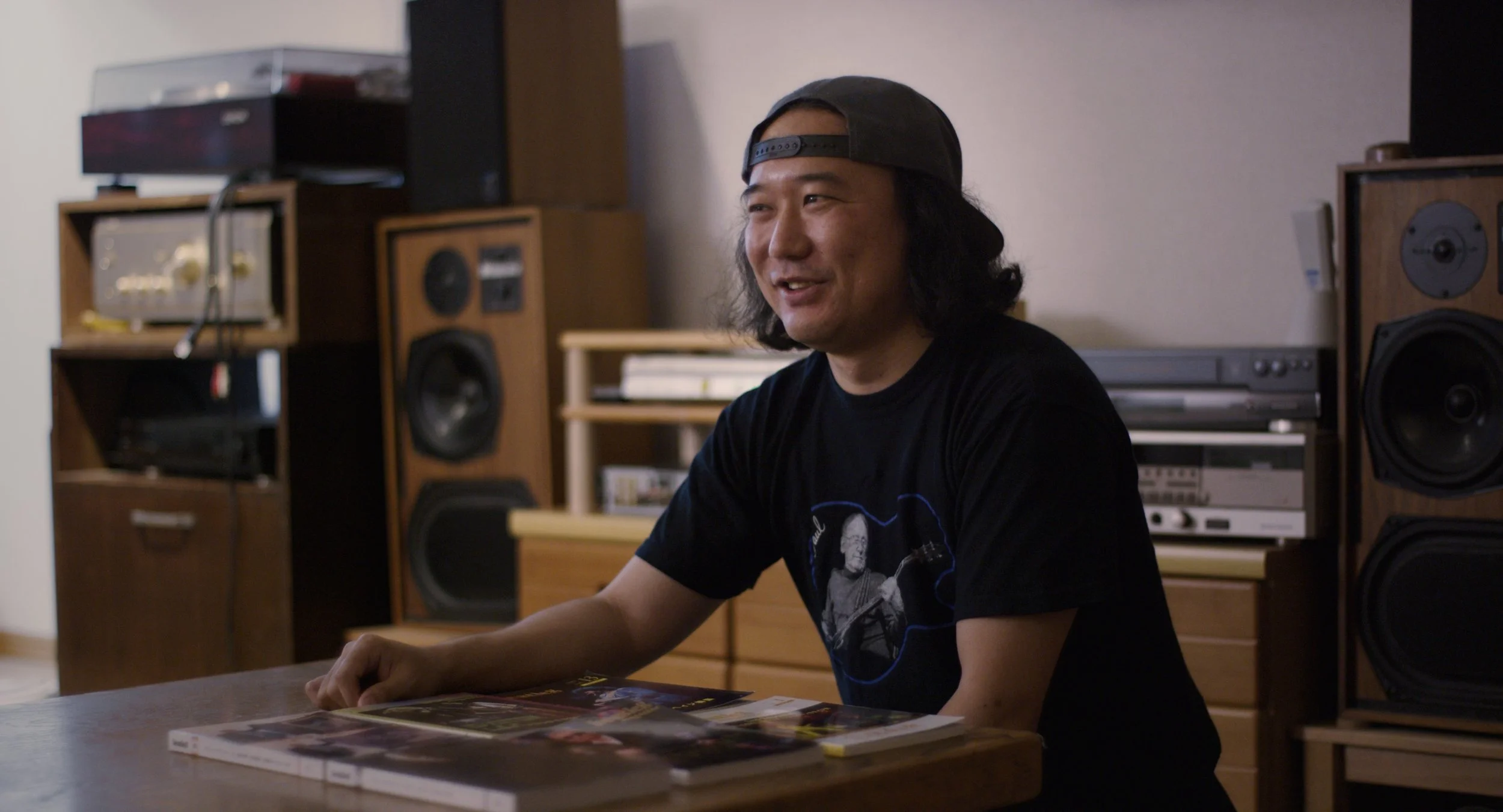
Mr. Yokoseki was the chief editor of “Beatleg,” Japan and one of the world’s foremost bootleg resources, considered indispensable by many hardcore Zeppelin fans. For more than twenty years, he’s been a friend and confidant of Akio Sakurai. In 2016, Beatleg magazine shut down, but Kiyo and Mr. Jimmy’s friendship and passion for Led Zeppelin’s live history continues today as strong as ever.

Mr. Fukano is the founder of "Freedom Custom Guitar Research," where guitars are made by hand right in downtown Tokyo. Freedom is one of very few factories that can handle everything from woodworking to intricate painting and Makoto’s team was responsible for Akio’s incredibly accurate rendition of Mr. Page’s majestic doubleneck guitar.
An original member of Disney’s corporate team that opened Tokyo Disneyland in the 1980s, Mr. Okamoto eventually moved to Southern California. When a friend invited him to see Led Zepagain perform, he was startled to see a Japanese guitarist performing with such passion. A friendship and business relationship developed, as he attempted to help Akio navigate the particularly foreign environment of Los Angeles. His passion for speed, as evidenced at Speed Week on the Bonneville salt flats annually, is similar to Zeppelin’s improvisation because of the inherent “danger” and the unpredictability of what might happen next.
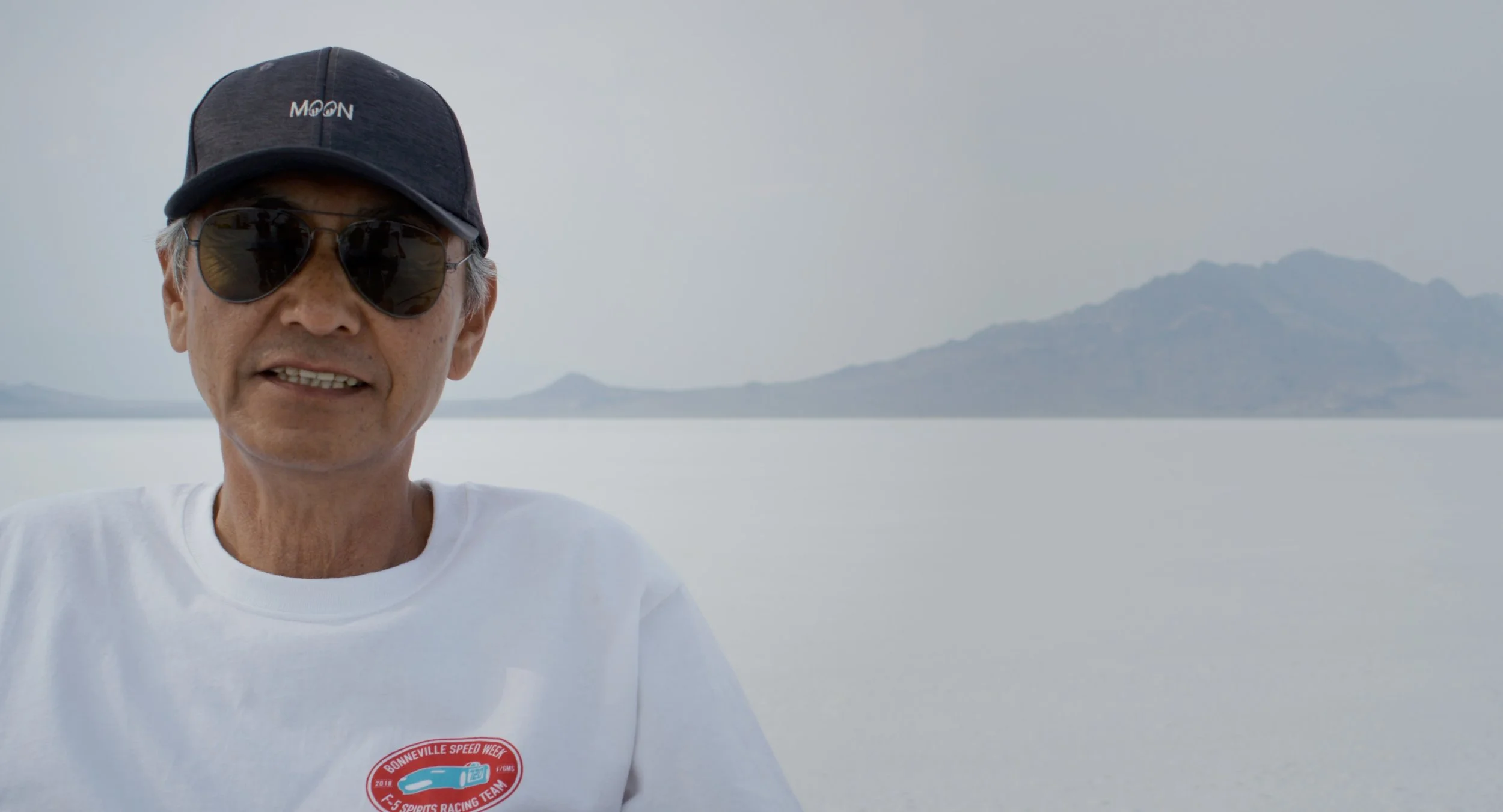
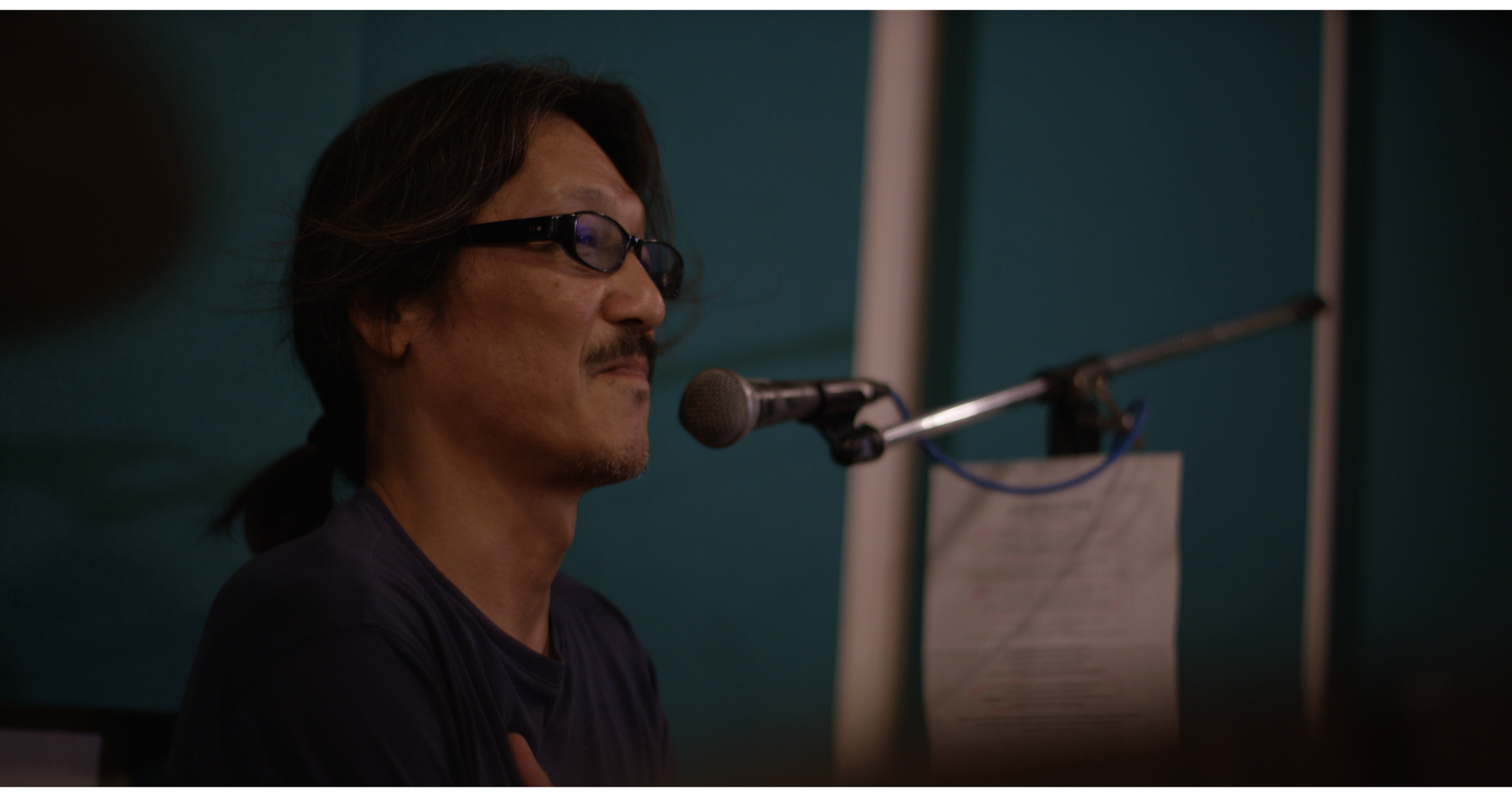
By day, Hideki "Dick" Kitahata is the president of an apparel company, but his real passion is for John Bonham, and the singular magic of Led Zeppelin’s live history. In his home rehearsal studio, “Dick” has all of Mr. Bonham’s famed kits -- from the “Green Sparkle” kit of Zeppelin’s first tour (and before with Band of Joy) to the iconic stainless steel kit of Knebworth ‘79 and the 1980 European tour. In 2013, he reached out to Akio, inviting him to visit his studio, and since then their shared passion has lead to a deep friendship and many inspired live performances.
Mr. Kurabaysashi is the executive director of TV Asahi, and the General Manager of the EX Theater in Roppongi. Having witnessed Led Zeppelin live in Japan in 1971, his life was changed forever. That incredible experience inspired him to champion the “revival” performances of Akio, ensuring that the stage, lighting, and all aspects of the theater would match whichever period Mr. Jimmy is recreating. As seen in the film, Akio and Led Zepagain’s recreation of the Madison Square Garden’s 1973 stage is a jaw dropping achievement in every regard, down to the pyrotechnic cues. Since then, with Mr. Jimmy, he has produced an equally stunning recreation of Led Zeppelin’s historic 1977 L.A. Forum concerts.


As the Stage Director of the EX Theater in Roppongi, Mr. Sakamoto leads his team as they go to extraordinary lengths to “revive” Led Zeppelin’s historic concerts. Once a show is announced, often a year in advance, Mr. Sakamoto and the theater staff begin meticulously researching available footage and photographs from the vintage concert, so that each piece of set dressing, lighting, pyrotechnics, and even the timing of those pyrotechnic cues can be perfectly recreated. As seen in the film, his one apology for concert goers for the “1973 MSG” recreation was that Mr. Bonham’s famous lighting of the gong could not be recreated due to strict regulations from the Tokyo Fire Department.
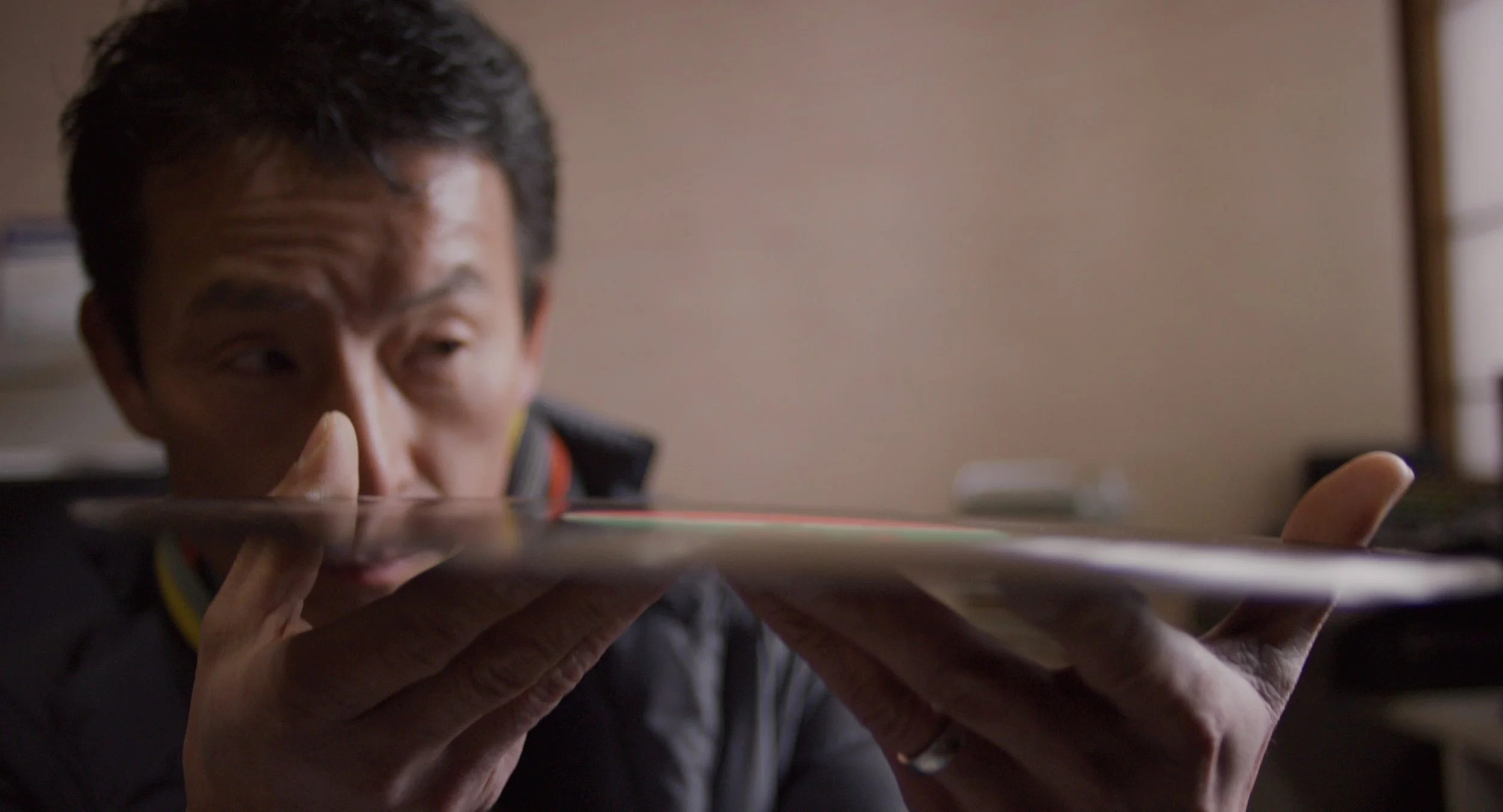
Listening to "Zeppelin IV" in Hiroshi's room at the age of 15, changed Akio’s life forever. Together they formed a band, with Akio on guitar and Hiroshi on bass, playing Led Zeppelin’s music in the snowy setting of Tokamachi, Niigata. Forty years later, whenever Akio returns home, they join with their high school bandmates, and continue performing the Zeppelin music they love so much.

Born in Drogheda, Ireland, originally intending to become a soccer player like his father, Montgomery moved to Dublin, and began singing in a variety of bands including “Rabbi” and “Wicked Chicken,” known for performing with the eponymous live chicken onstage at every show. Fortunes improved as he moved to London and joined “Tilt,” singing on their track “Ride the Tiger.” A major label record deal lead to his move to Los Angeles, however as that band fell apart an unlikely opportunity emerged. Joining the freshly formed Led Zepagain, Montgomery began a thirty year career performing as Robert Plant, and built the band into one of the first and now longest lasting tribute bands in America.
Son of bassist “Red” Wooten, who played with Frank Sinatra, Benny Goodman, and Woody Herman, and nephew of Les Paul and Mary Ford, Jim Wooten’s musical lineage is impressive. Having fallen in love with Led Zeppelin when his sister played “Kashmir” off the “Physical Graffiti” LP. It was his father who gave him Zeppelin’s “complete” book of transcriptions, and so began his decades-long study of the band’s music and John Paul Jones’ sonic genius. A student of Mr. Jones as well as his influences, like James Jamerson, Jim is determined to highlight the singular musicianship of Zeppelin’s multi-instrumentalist, having mastered bass, mandolin, foot bass, and keyboards in live and studio arrangements.

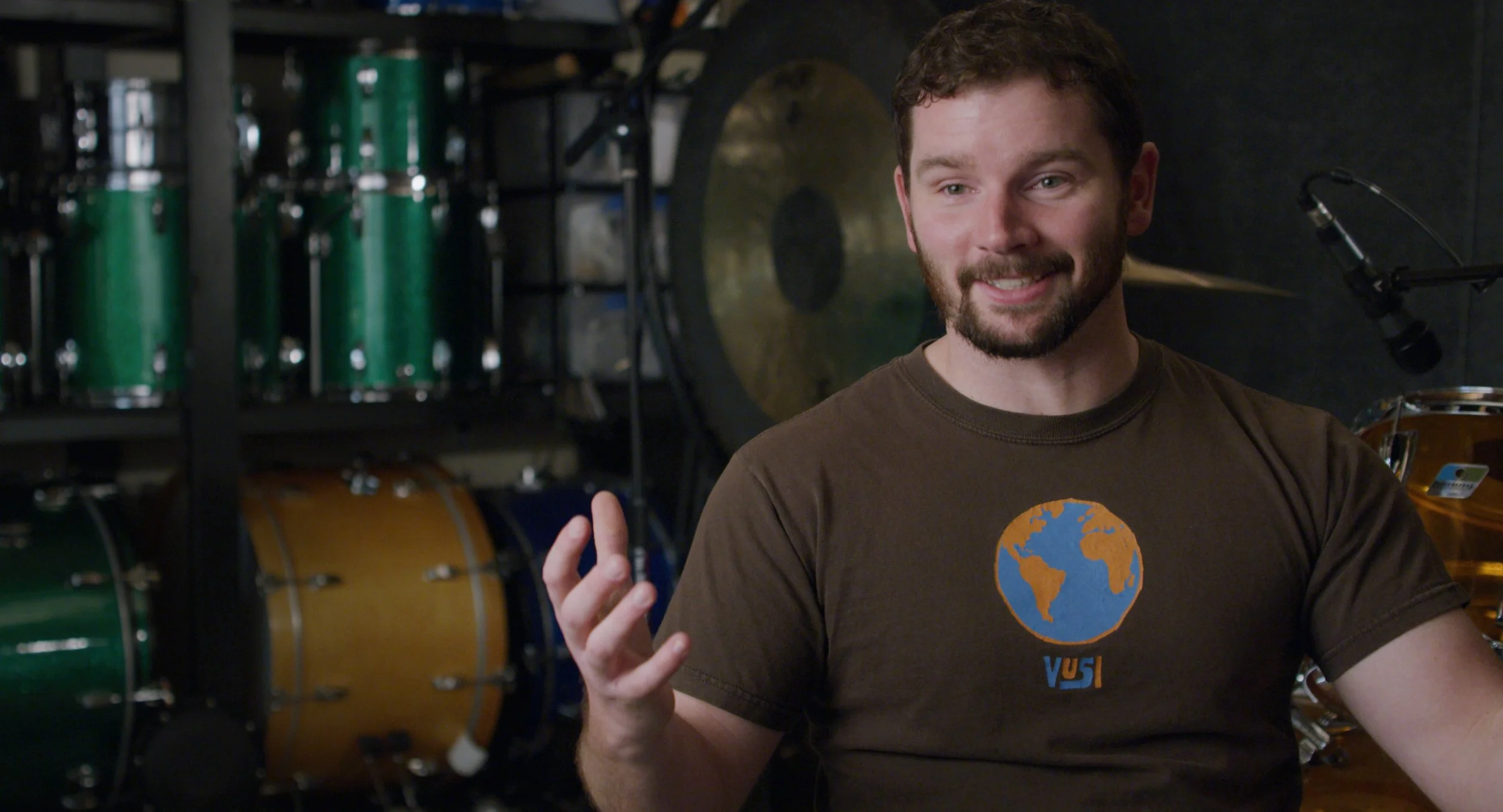
As a teenager, Derek walked into Blockbuster Video, rented a VHS copy of “The Song Remains the Same” and his life was changed forever. Stunned by Mr. Bonham’s crossover triplets at the finale of “Moby Dick,” he set course for an immersion in the maestro’s work, deepening his appreciation through studies of Zeppelin’s legendary live catalog and Bonham’s explosions of improvisation. Over time, Derek acquired recreations of each of the legend’s signature kits -- Maple Thermogloss (1969-70), “Green Sparkle” (1970-73), Vistalite (1973-75), and Stainless Steel (1977-1980). Describing his idol’s style as a blend of “power & grace,” Derek honors Mr. Bonham’s legacy with relentless dedication.
He was eight years old when he heard the haunting strains of “Four Sticks” emanating from his brother’s turntable across the hall. “What is this?,” young Shawn asked. The answer was Led Zeppelin, and so began a lifelong love affair with the band, and the soaring vocals of Mr. Plant. The son of jazz singer Bev Kelly, and Chuck Kelly, a multi-instrumentalist who played trombone with Dizzy Gillespie and turned down (!) a gig playing bass with Elvis Presley, for twenty years Shawn has performed with Zeppelin tribute bands including “Led Zepland,” “Mothership”, and “Led Zeppelive.”

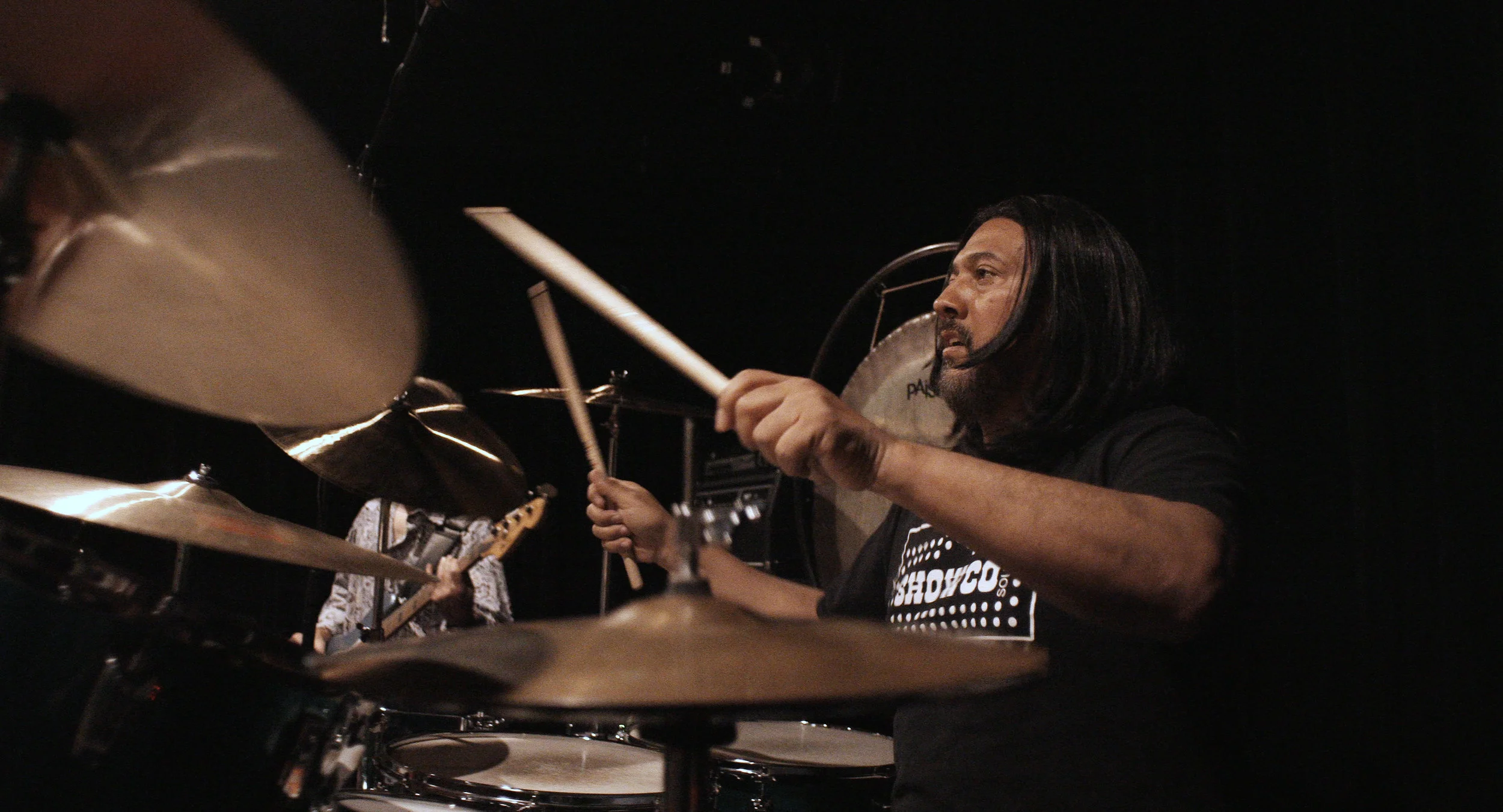
A student of Mr. Bonham’s for three plus decades, Nick draws continued inspiration from his idol’s live performance legacy, both the early formative tours of the band, as well as the later, spectacular stadium concerts. Of the four primary kits used by Mr. Bonham during his Zeppelin days, Nick is particularly drawn to the warm tones of the “Green Sparkle” kit used from 1970-73. A veteran of Zeppelin tribute bands “Sick Again,” “Zepshow,” “Mothership,’ and “Led Zeppelive,” his mantra remains, “if you’re gonna play Zeppelin, it has to be LIVE all the way.”
A veteran of Zeppelin tribute bands including “Mothership,” “Like Zeppelin,” “Whole Lotta Led,” and “Led Zeppelive,” Jeff borrowed a friend’s bass in 1971 and fell in love playing along to Mr. John Paul Jones’ groove. Likewise, he was blown away by Mr. Jones’ shimmering keyboard work, particularly the church organ introduction to “Your Time is Gonna Come.” The texture and contrast that piece brought to Led Zeppelin I was emblematic of Mr. Jones’ singular contributions to the band, and inspired Jeff to become a multi-instrumentalist and to attempt to capture his mentor’s genius on each. “Four Sticks” continues to amaze Jeff, for as he says, “Name another song that sounds anything like it.”


Thee Image Club, Miami Beach, February 14, 1969.

As a teenager in February of 1969, Frankie was too young to drive to Thee Image Club in Miami Beach where Led Zeppelin was performing, so his Dad took him in the family Cadillac. Upon entering the converted bowling alley turned music venue, Frankie took a seat right down front by Mr. Bonham’s kickdrums, surveyed the array of Rickenbacker amps, and as he recalls, “I wasn’t prepared for what I saw.” Staggering out of the theater and back to his father, who had spent the two hours reading the New York Times, sustained by a thermos of espresso and a box of De Nobli cigars, Frankie was in a state of shock. His father rolled down the window, “Are you OK?” Frankie was speechless. “That good?” his father asked. “Wanna come back tomorrow?” Frankie replied still reeling from what he’d seen and heard, “yes,” and the routine was repeated the next night for their second Image Club show.
Over the years Frankie has sold tens of millions of records with Quiet Riot, toured the world, played Madison Square Garden and for hundreds of thousands at the US Festival. When he performs with Mr. Jimmy it’s to recapture the magic of those teenage nights, to pay homage to Mr. Bonham, and to celebrate the singular, inimitable legacy of Led Zeppelin.
Coming soon

AVAILABLE NOW FOR CINEMA BOOKINGS
FOR NORTH AMERICAN SCREENINGS, CONTACT:
CINDY BANACH of ABRAMORAMA
FOR THE REST OF THE WORLD, CONTACT:
EVAN SAXON of ABRAMORAMA